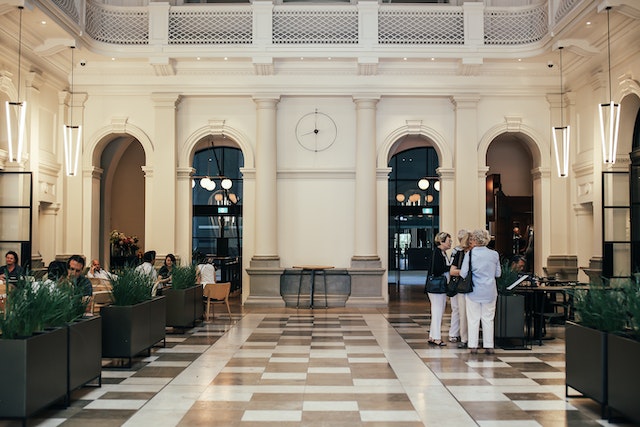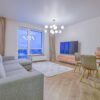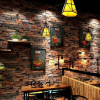
Creating A Welcoming Ambiance: Essential Elements Of Hospitality Interior Design
Creating a welcoming ambiance is essential in hospitality interior design. From hotels to restaurants to event spaces, the atmosphere plays a crucial role in how guests feel and experience their surroundings. This article will examine the elements that make a home warm and welcoming.
The first element to consider is lighting. Proper illumination can set the mood and create a welcoming atmosphere. Whether it’s soft and dim lighting for a cozy restaurant or bright and vibrant lighting for a lively hotel lobby, the right lighting can instantly transform a space. Additionally, the layout of the venue is crucial in maximizing space and flow. Guests should feel comfortable navigating the area and have easy access to different amenities. By carefully planning the layout, interior designers can ensure that every inch of space is utilized effectively to create a seamless and inviting environment.
Lighting: Setting the Mood with Illumination
Step into a warmly lit space that instantly embraces you with its cozy and inviting atmosphere. Lighting is a key element in creating an inviting ambiance for Hospitality interior design Chennai. It creates a mood and enhances guests’ overall experience. The right lighting can transform an uninviting and dull room into a warm, inviting space.
It is essential to combine different lighting types in order to achieve the desired atmosphere. Ambient lighting is used to provide general illumination, and it sets the tone for the room. You can achieve it through overhead fixtures such as pendant or chandelier lights or recessed lighting. Task lighting, on the other hand, is focused lighting that is used for specific activities, such as reading or working. You can achieve this with table lamps or wall-mounted fixtures. Accent lighting highlights specific objects or features in a space, like artwork or architectural details. By carefully selecting and combining these different types of lighting, hospitality interior designers can create a welcoming ambiance that instantly puts guests at ease.
Layout: Maximizing Space and Flow
To ensure a seamless experience for guests, it is crucial to optimize the layout of a hospitality space, maximizing both space and flow. It is important to consider the layout of your hospitality space when creating an inviting ambiance. It involves arranging furniture and fixtures to create an aesthetically pleasing and functional space.
One important aspect of layout design is maximizing space. Hospitality spaces often need to accommodate a large number of guests, so it is essential to make efficient use of every available inch. This can be achieved by carefully selecting furniture that is functional and space-saving, such as modular seating or collapsible tables. Additionally, the placement of furniture should be considered to ensure that there is enough room for guests to move around comfortably. Creating clear pathways and avoiding clutter can help maximize the perceived space in the area.
Another crucial aspect of layout design is ensuring a smooth flow within the hospitality space. Guests should be able to navigate through the space effortlessly, without any obstructions or confusion. This can be achieved by considering the natural flow of movement and strategically placing furniture and fixtures accordingly. For example, the reception desk should be easily accessible and clearly visible upon entering the space. Seating areas should also be designed in a manner that encourages conversation and interaction while still providing privacy when needed. By optimizing the layout to promote a smooth flow, guests will feel welcomed and at ease in the hospitality space.
Decor: Adding Personality and Character
As you step into a hospitality space, you will be greeted by the decor that adds personality and character, making it a truly unique experience. Decor is crucial in setting the tone and creating an inviting atmosphere for your establishment. Every element, from the color scheme to furniture and accessories choices, contributes to a welcoming atmosphere.
One important aspect of decor is the use of artwork and decorative pieces. The right selection of paintings, sculptures, or photographs can instantly elevate the space and make it more visually appealing. These pieces can also reflect the theme or concept of the establishment, further enhancing the overall experience for guests. Additionally, the use of textiles such as curtains, carpets, and upholstery can add warmth and texture to the space, creating a cozy and inviting atmosphere. Fabrics and patterns must be chosen carefully to match the desired atmosphere.
Decor is an essential element of hospitality interior design as it adds personality and character to the space. Through the careful selection of artwork, decorative pieces, and textiles, a welcoming ambiance can be created that leaves a lasting impression on guests. By paying attention to the details and incorporating elements that align with the overall concept, hospitality spaces can provide a truly unique and memorable experience for visitors.
Color Scheme: Creating a Harmonious Palette
When choosing a color scheme, it’s important to consider the overall concept and theme of the space in order to create a harmonious palette. The colors used in the interior design of a hospitality space can greatly impact the ambiance and the perception of the establishment. Warm colors such as reds, yellows and oranges can create an inviting and cozy atmosphere. Cool colors, like blues and greens can promote calmness and relaxation. By carefully selecting colors that complement each other and align with the desired mood, a harmonious palette can be achieved.
In addition to considering the concept and theme, it’s also important to think about the psychological effects of different colors. For example, blue is often associated with tranquility and can be a good choice for spaces where guests want to feel calm and peaceful, such as a spa or a hotel room. Red is an energetic and bold color, which can create excitement and stimulation. It’s a good choice for a lively restaurant or bar. By understanding the emotional impact of different colors, designers can strategically incorporate them into the space to enhance the desired ambiance and create a welcoming environment for guests.
Comfort: Ensuring a Relaxing Environment
Immerse yourself in a sense of tranquility and relaxation by ensuring a comfortable environment in your hospitality space. Comfort is a crucial element in creating a welcoming ambiance that allows guests to unwind and feel at ease. To achieve this, it is important to consider various factors such as furniture, lighting, and temperature control.
Firstly, the choice of furniture plays a significant role in providing comfort. Opt for plush seating options that are ergonomic and supportive, allowing guests to sit or lounge for extended periods without experiencing discomfort. Incorporate soft cushions and pillows to add an extra layer of coziness. Additionally, consider the placement of furniture to create a layout that promotes easy movement and social interaction while maintaining a sense of privacy.
Secondly, Lighting is also important in creating a relaxed atmosphere and setting the mood. Combining natural and artificial light will create balance. Large windows will allow for natural light to fill the room during the day. This will promote a feeling of openness, and a connection with the outdoors. In the evenings, use dimmable, warm lighting that can be controlled to create an intimate and cozy atmosphere.
Lastly, temperature control is essential in ensuring the comfort of guests. Maintain a consistent temperature throughout the space by installing an efficient heating and cooling system. Additionally, provide guests with the ability to adjust the temperature in their individual rooms, allowing them to personalize their comfort levels.
By prioritizing comfort in your hospitality space, you create an environment that invites guests to relax and feel at home. Consider the choice of furniture, lighting, and temperature control to ensure a comfortable and welcoming ambiance that leaves a lasting impression.





0 comments